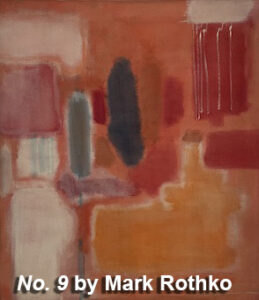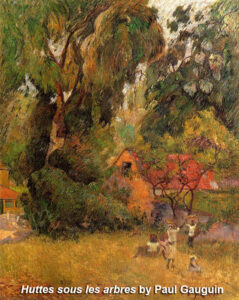 The color orange, a newer color term, is based upon the 14th century European discovery of the fruit.
The color orange, a newer color term, is based upon the 14th century European discovery of the fruit.
In the foothills of the Himalayas in the 13th century, Persian traders first saw the glories of a tart, bright-skinned fruit used by the locals for medicinal purposes. They never saw a fruit of this unique color—inside and out. In Sanskrit, that fruit is naranga.
Persian traders called this fruit naranji. Soon Portuguese and Spanish traders carried the narangia (in Spanish) to the Mediterranean. English traders in the 15-16th centuries called the fruit the norange, but because “an norange” didn’t sound right, they dropped the “n.” All of Europe marveled at the color. Previous to the discovery of the fruit, they called it “geoluhread,” a color somewhere between red and yellow, in Middle English. Chaucer in 1390 wrote about a foxtail color “betwixe yello and reed.” As the fruit grew in popularity, the color name became firmly established. Called homophonic, both the fruit and the color are the same word. Color words/terms are BORN and CHANGE when people draw analogies with items in their environments.
My question:
 If no word existed for orange before 1400 or so in English, did Britons see the color orange? The answer is yes, and I can prove this. Most languages use close to eleven basic “color names.” In English we have black, white, red, green, yellow, blue, pink, gray, brown, orange, and purple. Speakers of languages with fewer words for color see the same colors but each of the fewer color words offers a broader spectrum. The language native to Alaska, Yup’ik, contains five terms for five colors. A color such as orange is called “red-yellow.” Languages with two color terms typically speak of colors as black (-ness) or white (-ness). Our English word for black comes from a word meaning “burnt,” and our word for white from a word meaning “shining.”
If no word existed for orange before 1400 or so in English, did Britons see the color orange? The answer is yes, and I can prove this. Most languages use close to eleven basic “color names.” In English we have black, white, red, green, yellow, blue, pink, gray, brown, orange, and purple. Speakers of languages with fewer words for color see the same colors but each of the fewer color words offers a broader spectrum. The language native to Alaska, Yup’ik, contains five terms for five colors. A color such as orange is called “red-yellow.” Languages with two color terms typically speak of colors as black (-ness) or white (-ness). Our English word for black comes from a word meaning “burnt,” and our word for white from a word meaning “shining.”
Languages with THREE color words usually use them to indicate black, red, and white. If a language has four color terms, those terms will mean black, red, yellow or green, and white. A language with five to six color terms, the words will be black, red, yellow or green, white, and brown, and the last color named is usually blue. BLUE is the term least likely included in any language with limited color words/terms. I find this fascinating because BLUE is by far the world’s most favorite color. A YouGov survey ranks blue as the most popular color for men and women in ten countries across four continents, even China, where other colors are more auspicious.
Another question:
 In languages where the fruit is called an orange but has a different color name than the fruit’s name, do those speakers see the color orange? Do they bite into the same fruit? Of course! When a Russian speaker wants to eat an orange, they asks for an apel’sin (the color is oranzhevii). German speakers ask to eat an apfelsine, which is the color term orange in German, the same spelling as in English. The Dutch eat a “Chinese apple:” a sinaasappel, and the color is oranje. The Hebrew name for the fruit bitten is the most poetic, as the fruit is a tapuz, short for tapuach Zahar, the golden apple. The object predates the name of the color as a general rule, such as the naming of the color chartreuse, after a French liquor.
In languages where the fruit is called an orange but has a different color name than the fruit’s name, do those speakers see the color orange? Do they bite into the same fruit? Of course! When a Russian speaker wants to eat an orange, they asks for an apel’sin (the color is oranzhevii). German speakers ask to eat an apfelsine, which is the color term orange in German, the same spelling as in English. The Dutch eat a “Chinese apple:” a sinaasappel, and the color is oranje. The Hebrew name for the fruit bitten is the most poetic, as the fruit is a tapuz, short for tapuach Zahar, the golden apple. The object predates the name of the color as a general rule, such as the naming of the color chartreuse, after a French liquor.